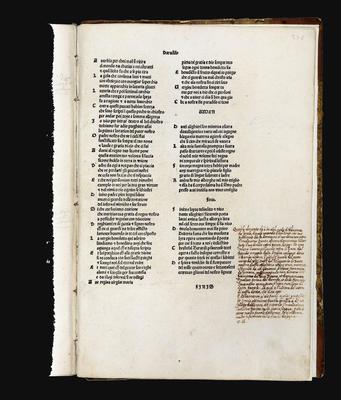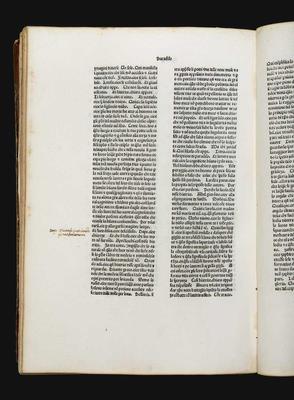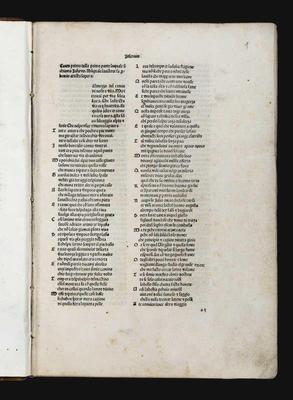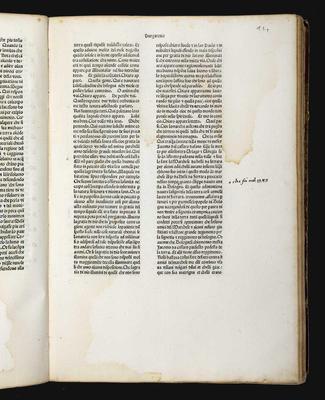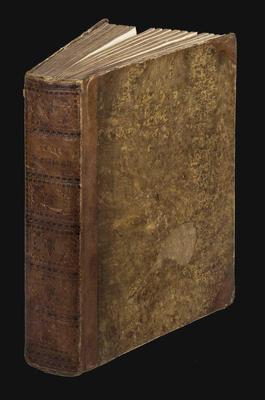Dante Alighieri
Qui comincia la vita e costumi dello excellente Poeta vulgari Dante alighieri di Firenze honore e gloria delidioma Fiorentino...
Venice, Vindelinus de Spira, 1477.Folio (324x223 mm). See the previous item for the bibliographical description. [357] of [376] leaves, wanting – as in many recorded copies – the first two quires containing Boccaccio'sTrattatello in laude di Dante, fol. a2 with the Tabula, and the blanks a1 and pp12. Pencilled foliation on the outer upper corner. Nineteenth-century hazel half-leather over pasteboards, boards covered with marbled paper. Smooth blind-tooled spine, title and imprint in blind lettering, with ‘Venezia 1477' in dark ink. On tail-edge, the inked title ‘Dante col Commento'. An excellent copy, slightly stained and browned, a few pale finger-marks. A single small wormhole in the blank margins of the last quires. Marginal annotations in Vincenzo Buonanni's own hand.
Provenance: Vincenzo Buonanni (sixteenth century; marginal notes in his own hand); the Italian Dante scholar Alessandro Torri (1780-1861; see his letter included in Studi inediti su Dante Alighieri, 1846); Livio Ambrogio collection.
A remarkable copy of the Vindeliniana annotated by the nobleman, poet and member of the Florentine Academy Vincenzo Buonanni, one of the leading figures among sixteenthcentury Dante scholars. He was the author of the commentary Discorso di V. B. sopra laprima cantica della Commedia (Florence 1572), which also includes a revised text of theInferno on the basis of early manuscripts which belonged to Buonanni himself.The attribution of the marginal notes to Buonanni – based on the comparison with autograph manuscripts held in various Florentine libraries – was first made by the nineteenth-century Dante scholar Alessandro Torri, who owned this particular copy and who in a letter published in the miscellany Studi inediti su Dante Alighieri (1846) refers to the presence of this annotated volume in his own library.Furthermore, in the same letter Torri also gave a transcription of the lines which Buonanni wrote next to the colophon, signing them, as was his wont, with his initials V. B. In this lengthy note Buonanni challenges the editor Cristoforo Berardi's attribution of the commentary to Benvenuto da Imola (“Questo commento non è in alcun modo di Benuenuto da Imola”), and suggests that the actual author was “Jacopo Bolognese”, i.e. Iacomo della Lana. According to Batines, the antiquarian Gian Vincenzo Pinelli was the first person to make this correct attribution for the authorship of the commentary, in a letter written on 18 April 1583 to Jacopo Contarini. This copy therefore of the 1477Commedia adds a new and significant piece of information to the history of Dante criticism in the Italian Renaissance.


